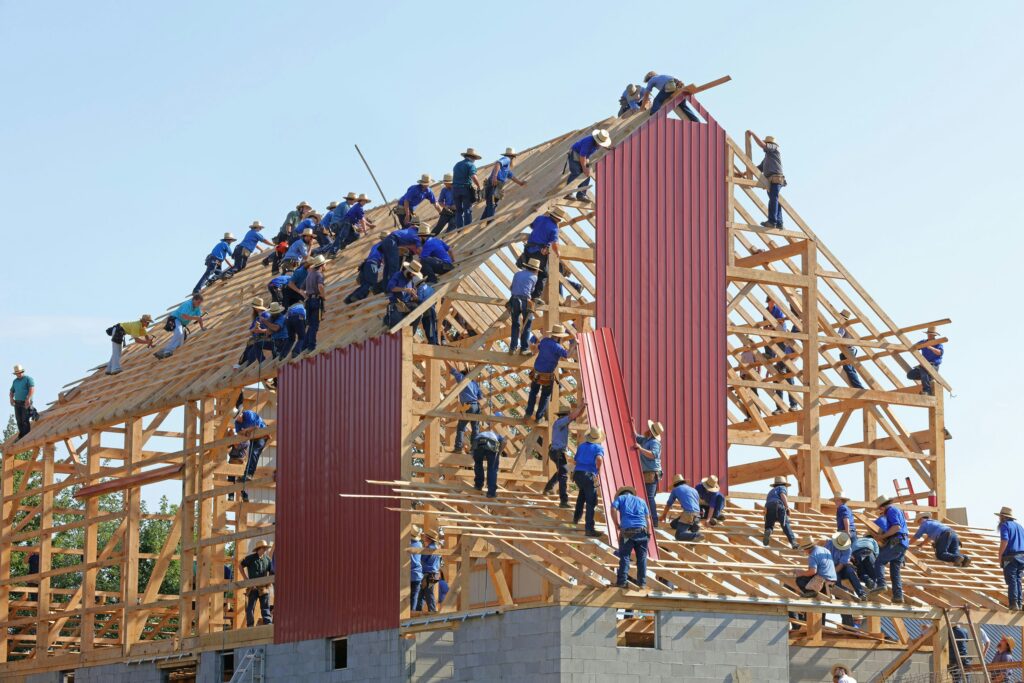Improv Training for Executive Teams: The Secret to High-Performing Leadership
Several years ago, my comedy troupe, The Maydays, were asked to perform in a ‘high-performing teams’ showcase for a large corporate event. The lineup of high-performing teams included us, a shadow gymnastics group, a jazz trio, and Britain’s Got Talent famous street dance troupe, Flawless.
Apart from being a very fun show, it was really interesting to be ‘studied’ by 500 executives, all wanting to be close to that elusive magic of a genuinely high-performing team. This was a group curious about what makes great teams tick—particularly for executive teams aiming for peak performance. So, what did these seemingly unconnected groups have in common that defined them as high-performing teams?
Research shows that high-performing teams do share certain traits, and it turns out that improv training for executive teams may cultivate many of these same qualities. Collaboration, trust, and adaptability are key characteristics that make any team excel.
So, make yourself a cup of tea and read this blog about the top characteristics of high-performing teams, and how improv skills may hold the key to many of them.

1. Clear and Shared Goals
In improv, each scene starts with a basic framework—not a script, but a shared understanding. This gives players direction without boxing them in. The same applies to high-performing teams: they need clear goals and defined roles, but with enough flexibility for individual strengths to shine through. Improv teaches us to balance structure with freedom, making it easy for team members to know their purpose while still having room to create and contribute uniquely. In improv training for executive teams, this balance of guidance and flexibility becomes a core focus, aligning everyone’s contributions with a common goal.
2. Open and Transparent Communication
Improv is all about being present and listening deeply to your scene partners. There’s no room for half-listening; if you miss a cue, there is no safety net. In a team, strong communication means sharing ideas openly and actively listening to one another. Improv helps build this skill by encouraging people to stay fully engaged, creating an environment where every team member feels heard and valued. Experiential leadership training often includes these improv-based exercises because they build the communication skills critical for effective team collaboration.
3. Trust and Mutual Respect
Trust is the backbone of any improv team. Improv teaches participants to trust each other and support each other’s choices, no matter how unexpected. High-performing teams thrive on this same trust, which allows members to take risks and suggest ideas without fear. When respect flows in both directions, teams feel safe exploring creative solutions to complex problems. This trust-building aspect of improv training for executive teams helps cultivate the courage and support needed for dynamic team environments.

4. Strong Sense of Accountability
In improv, every choice you make is visible and has an impact on the scene. There’s no way to pass the buck or avoid responsibility. Similarly, high-performing teams depend on each member taking responsibility for their work and their impact on others. Improv fosters accountability by creating a space where everyone is responsible for contributing and staying engaged, helping build a culture of reliability and trust within a team. High-performing team training that includes improv skills can strengthen each member’s sense of ownership and accountability.
5. Adaptability and Flexibility
One thing is guaranteed in improv: the unexpected will happen. There are no scripts to rely on, so players learn to adapt quickly and respond to whatever their partners throw at them. This adaptability is key for high-performing teams, too. Workplaces are full of unexpected challenges, and teams that can pivot and find solutions in real-time are the ones that thrive. Improv gives team members practice staying flexible, ready to adjust their approach when something new comes up. Experiential leadership training taps into this adaptability, preparing teams to handle any changes that come their way.
6. Commitment to Continuous Improvement
Improv is a learning journey — each scene, each game, and each show brings new insights. Teams that perform at a high level are also constantly learning and evolving. After every improv show, we take time to reflect: What worked? What could we do differently? We can never plan the performance because it’s improvised, but we can have a sense of what works and what to aim for. This commitment to continuous improvement builds resilience and growth, allowing teams to tackle new challenges with a fresh perspective. This is a mindset that improv training for executive teams actively fosters.
7. Positive Team Culture
Improv is the ultimate team sport. There’s no room for solo stars; every person in the scene plays a part in building something bigger than themselves. The same is true for high-performing teams, where collaboration is key. Team members learn to celebrate each other’s successes and support each other’s contributions. Improv encourages this collective mindset by teaching participants to accept and build on each other’s ideas — with the principle of ‘bring a brick, not a cathedral.’

So hopefully now you’ve finished your tea and had a read, I hope being part of a high-performing team feels more achievable to you than it did to those 500 executives. Being a high-performing team isn’t just for street dancers, jazz musicians, or comedians. The beauty of improv skills is that anyone can benefit from these practices, and the skills are directly transferable to the workplace. Improv training provides a low-stakes, high-fun environment to experiment with these team-building skills. By practicing adaptability, trust, and collaboration in an improv setting, teams learn to apply these skills at work, building a foundation for high performance and strong interpersonal connections.
So if you’ve got a low-performing team, a high-performing bunch of individuals who need to come together, or even a high-performing team who want to maintain their level, then getting them to stretch their improv muscles through high-performing team training may just be your answer.